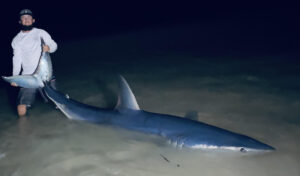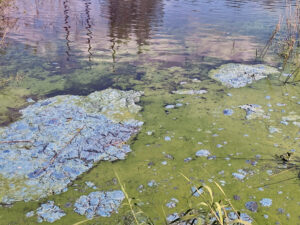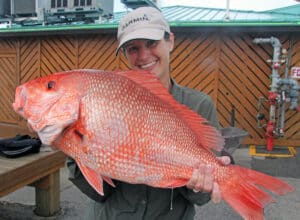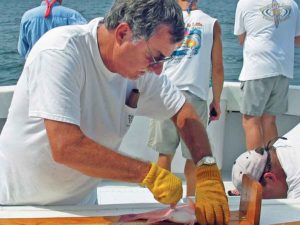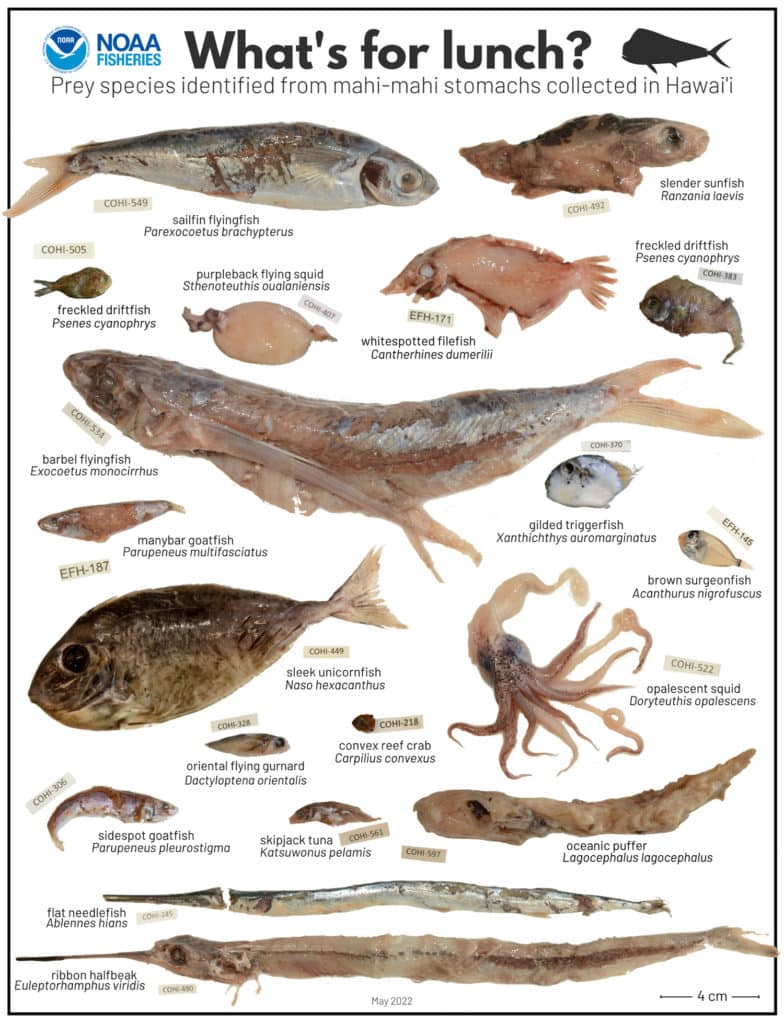
National Oceanic and Atmospheric Administration (NOAA) fisheries scientists are requesting Hawaiian fishermen to collect dolphin (mahimahi) stomachs for their research.
The stomach contents will help NOAA scientists better understand what mahimahi eat. The study also will show how much mahimahi diet is made up of coral reef inhabitants.
Anglers can receive financial rewards for participating in the program, according to NOAA.
“Collaborating with the fishing community is an important component of this work,” says Keith Kamikawa, fishery management specialist from NOAA’s Pacific Islands regional office. “We’re conducting science while getting Hawaii fishermen involved.”
Kamikawa explained that while coral reef fish live their adult lives near shore, when they mature and spawn, their larvae drift out to sea and develop in the open ocean where mahimahi roam.
“There they grow from tiny plankton to pelagic juveniles just a couple of inches long,” he said.
Kamikawa says juvenile reef fish may become prey of mahimahi (and other pelagic predators) while on their way back to the reef to grow into adults.
If reef species are an important part of mahimahi diet, protecting coral reef habitats where they mature and spawn could play a significant role in maintaining populations of mahimahi around the islands.
NOAA scientists rely on mahimahi stomach samples donated from recreational, subsistence, and charter fishermen, who catch more mahimahi than a fleet of NOAA boats could, and anglers can provide scientists with stomach samples year-round.
NOAA offers a “punch card” program to obtain recently caught mahimahi stomachs from fishermen. Anglers also must share the catch location, type of bait used, and size of the mahimahi, plus other catch-related information.
Fishermen will receive one point for every mahimahi stomach. For every 10 points, they receive a $50 gift card to a local fishing supply store. So far, fishermen have donated more than 300 dolphin stomachs.
“We’re really getting a great look into mahimahi diets in Hawaii,” said Nan Himmelsbach, a research associate who works for NOAA. “Preliminary results using DNA barcoding techniques have revealed that the majority of prey items found in mahimahi stomachs are juvenile stages of reef-associated animals, such as goatfish and surgeonfish.”
Scientists use genetics to identify digested mahimahi prey that would otherwise be unidentifiable. They’ve learned that notoriously ravenous-eating mahimahi have an extremely diverse diet.
So far, scientists have identified more than 500 prey items from the mahi stomachs they’ve processed.

